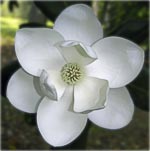Wavering Place Plantation – Eastover – Richland County
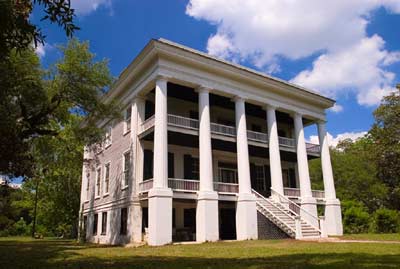
— Wavering Place Plantation © Steve Purcell/Julian Adams, 2005 —
(Do Not Use Without Written Consent)
Basic Information
- Location – Eastover, Richland County
Located at 427 Adams Hayne Road, Eastover, on US 378 southeast of Columbia
- Origin of name – ?
- Other names – Magnolia
- Current status – Privately owned and operated as a special events venue (5).
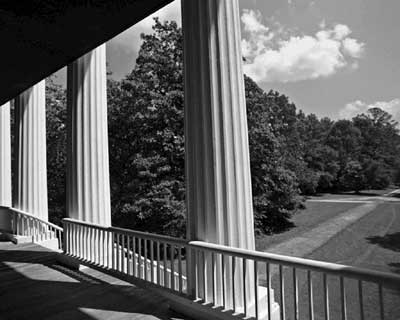
— Wavering Place Plantation Porch © Steve Purcell/Julian Adams, 2005 —
(Do Not Use Without Written Consent)
Timeline
- 1760 – Earliest known date of existence when Joel Adams was issued a land grant from the fork of the Congaree and Wateree rivers to Cedar Creek (2 and 3).
- ? – First house built (5).
- ? – Joel Adams' son Dr. William Weston Adams inherited Wavering Place Plantation (5).
- 1830s – Dr. Adams left Wavering Place and moved to Alabama to take over the Adams family plantations there (5).
- ? – Francis Tucker Hopkins, founder Joel's granddaughter, became owner of the plantation (5).
- Circa 1850 – The house was lost to fire. Francis built the second house at Wavering Place and called her home Magnolia Plantation (5).
There are two alternate theories on how James Pickett Adams obtained the plantation:
- Theory One:
1865 – Francis Hopkins sold the plantation to her cousin James Pickett Adams (5).
- Theory Two:
? – Magnolia was lost in a bet by Fannie's son, Edward Hopkins, to James Pickett Adams after the Civil War. Hopkins had pledged 50 slaves to cover a $34,000 gambling debt. Since slaves were no longer considered property, the issue of substituting other property for the slaves was taken to the South Carolina Supreme Court. The court declared in 1869 that real property must be used for debt repayment as freed slaves could no longer be owned. Edward Hopkins owned Magnolia and Minerva plantations at the time and Magnolia was turned over to James Pickett Adams. Family lore suggests the plantation became known as "Wavering Place" after Adams took position as its ownership was in doubt (3).
James Pickett Adams also owned nearby Beulah Plantation (now the site of McEntire Air National Guard Base) (3).
- ? – James' daughter, Elizabeth 'Lillah' Adams, inherited the plantation from her father. She was married to Theodore Brevard Hayne (3) (4).
- ? – Elizabeth passed Wavering Place to her son Dr. James Adams Hayne (4).
- ? – Lillah Adams Hayne would be the next family member to own the plantation. She inherited Wavering Place along with two other family plantations, Beulah and Minerva (3).
Minerva Plantation was sold during The Depression to raise funds to be able to keep the other two properties. Beulah Plantation was taken by the government during World War II to build what is now McEntire Joint National Guard Base (3).
- ? – Lillah Adams Hayne left all her holdings to her children, with son Adams Hayne to occupy Wavering Place (3).
- 1986 – Wavering Place was sold to Dr. Calhoun Julian Adams keeping it in the same family since its founding. When it was sold, the funds were distributed among 50 Adams family descendants (3) (5).
- 2013 – Dr. Julian Adams' nephews, Robert Adams VI and Weston Adams III, acquired the plantation from their uncle. In 2014, they opened the house as a bed and breakfast and for special events (5).
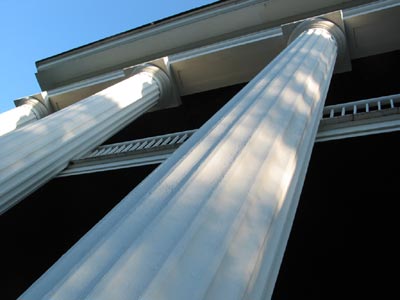
— Columns of Wavering Place Plantation © Steve Purcell/Julian Adams, 2005 —
(Do Not Use Without Written Consent)
Land
Slaves
- Number of slaves – 50 under Edward Hopkins (3)
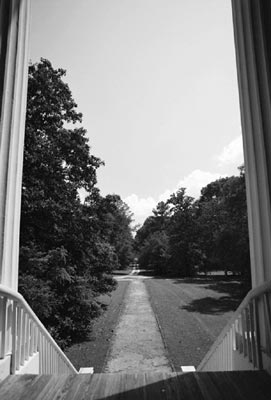
— Wavering Place Front Walk —
— © Steve Purcell/Julian Adams, 2005 —
(Do Not Use Without Written Consent)
Buildings
- Greek Revival house and outbuildings have been restored (5).
References & Resources
- Wavering Place Gardens and Nursery: (source no longer online)
- Laura Jervey Hopkins, Lower Richland Planters: Hopkins, Adams, Weston, and Related Families of South Carolina, (Self published, 1976)
- Information contributed by Margaret Curtis
- Information contributed by Julian Adams II
- History of Wavering Place Plantation - Click here
Contact Information
- Wavering Place Plantation
427 Adams Hayne Road
Eastover, SC 29044
Telephone: 803-875-1868
Website: Click here

